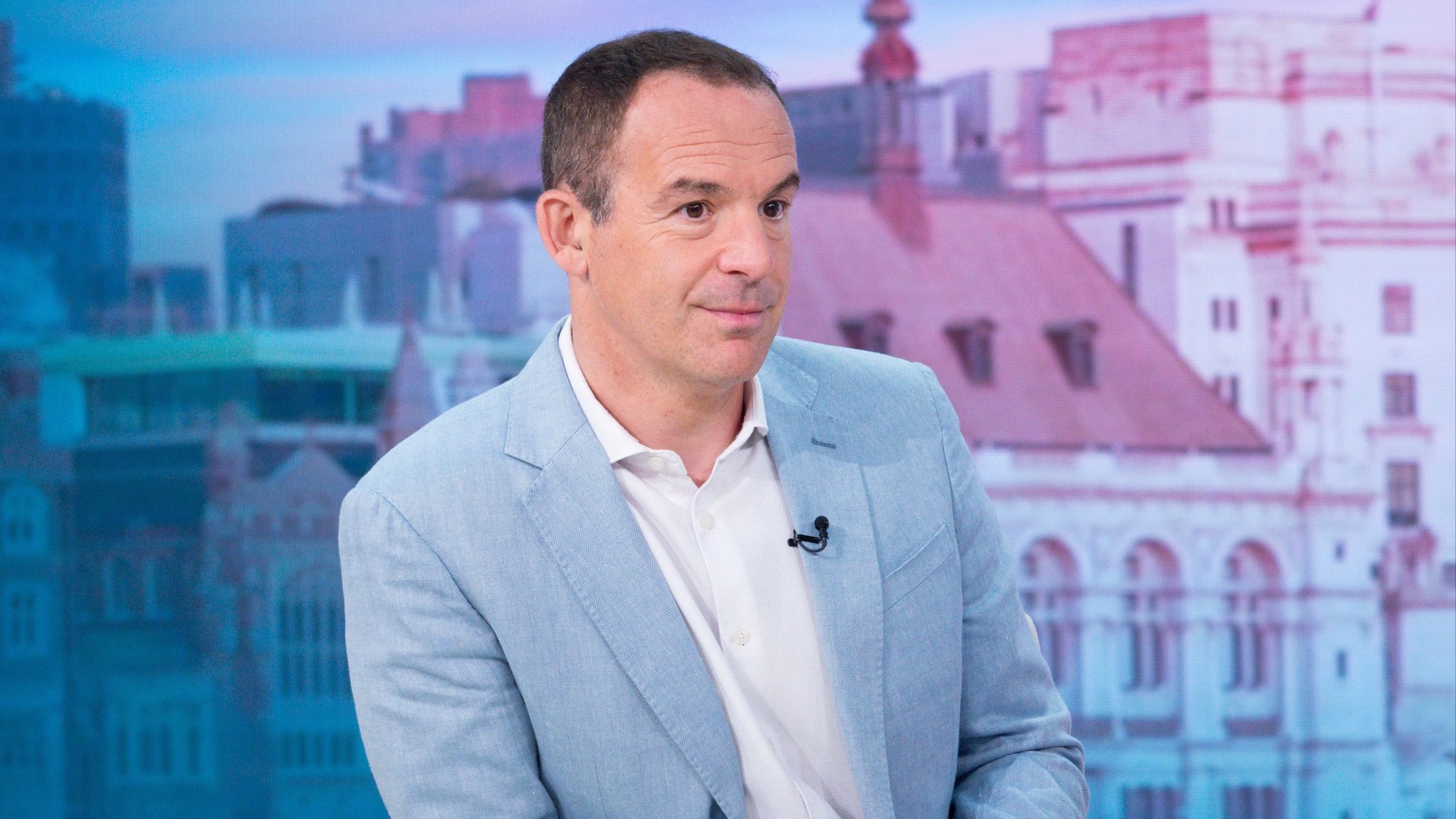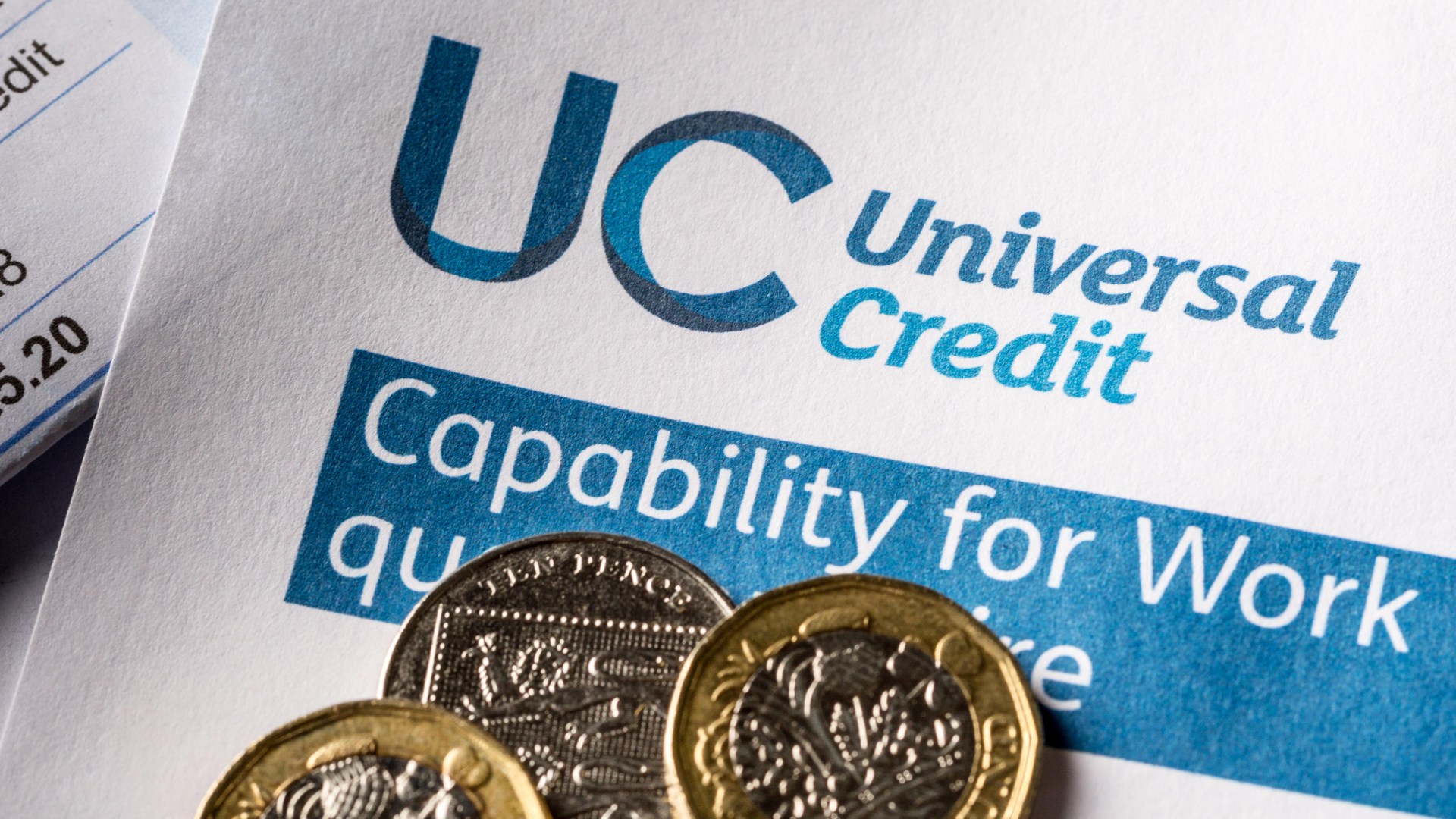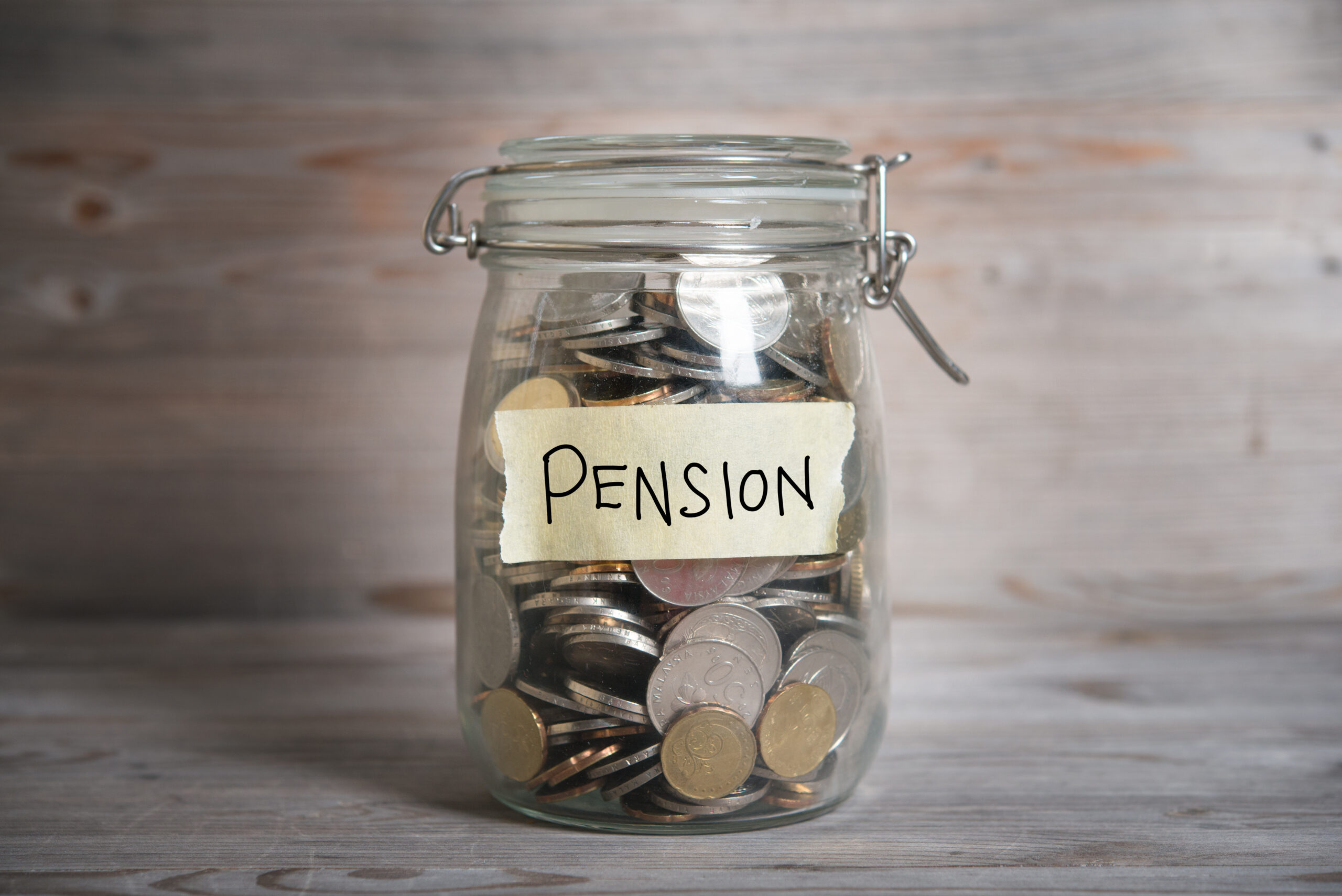Money
Major bargain chain with 850 branches launches new loyalty scheme where shoppers can get discounts

A MAJOR bargain chain is expanding its loyalty scheme to all its 850 stores and website from tomorrow.
Poundland is taking its Poundland Perks rewards app UK-wide, opening up points on purchases and product discounts for millions of customers.
The bargain discounter has been trialling the phone-based loyalty scheme at around 100 stores in Northern Ireland, Scotland and the Isle of Wight since last year.
But the major retailer has now exclusively revealed to The Sun it will be extended to all UK stores and its website from tomorrow.
Shoppers can download the Poundland Perks app on to their smart phone via the Google Play and Apple App store.
HOW DOES IT WORK?
Customers get discounts on at least 100 products at any one time and earn “perks points” on their purchases.
They will get one point per 1p spent and once they’ve built up 5,000 be able to redeem a digital voucher in-store or online toward the cost of their shopping.
That means they’ll have to spend £50 to get to 5,000 points.
Once shoppers have collected 5,000 points they will get £1 off a future shop.
To mark the launch of the loyalty scheme UK-wide, Poundland is offering customers the chance to accrue points on all products in-store and online until December 24.
After this point, customers will still be able to build up points on purchases, but only on selected products.
Bargain hunters will also be able to win points every Wednesday from October 23 via the app’s “Spin to Winsday” game.
Some of the prizes on offer include TVs, soundbars, free online delivery and on the spot point awards worth up to 1,000.
HOW SHOPS WILL CHANGE
Poundland said it was pumping around £20million worth of investment into store tills and self-checkouts to make them compatible with the new app.
The retailer said every self-service till will let customers earn and redeem points by December 1.
Meanwhile, every manned checkout will let customers scan the app from tomorrow.
The app is also fully usable on the poundland.co.uk website.
Poundland has far from stood still in recent years as shoppers turn their attentions to bargain chains amid a higher cost of living.
The discounter snapped up 71 former Wilko stores in September 2023 which included a mixture of high street and retail park sites.
Administrators for Wilko struck a deal with Poundland owner Pepco who said it would “prioritise” Wilko workers for roles.
Since the start of the year, 150 stores have been undergoing a huge regeneration project with new signage highlighting the best deals.
In May, Poundland also exclusively revealed to The Sun it would launch a new meal deal for just £3.
HOW IT COMPARES TO OTHER LOYALTY SCHEMES
Most UK supermarkets have loyalty schemes so customers can build up points and save money while they shop.
Iceland
Unlike other stores, you don’t collect points with the Iceland Bonus Card.
Instead, you load it up with money and Iceland will give you £1 for every £20 you save.
Lidl Plus
Lidl customers don’t collect points when they shop, and are instead rewarded with personalised vouchers that gives them money off at the till.
Morrisons
The My Morrisons: Make Good Things Happen replaces the More Card and rewards customers with personalised money off vouchers via the app.
Sainsbury’s
While Sainsbury’s doesn’t have a personal scheme, it does own the Nectar card which can also be used in Argos, eBay and other shops.
You need 200 Nectar points to save up £1 to spend on your card.
You need to spend at least £1 to get one Nectar point.
Tesco
Tesco Clubcard has over 17million members in the UK alone.
You use it each time you shop and build up points that can be turned into vouchers – 150 points gets you a £1.50 voucher.
Here you need to spend £1 in Tesco to get one point.
Waitrose
MyWaitrose also doesn’t allow you to collect points but instead you’ll get access to free hot drinks, and discounts off certain brands in store.
How to bag a bargain
SUN Savers Editor Lana Clements explains how to find a cut-price item and bag a bargain…
Sign up to loyalty schemes of the brands that you regularly shop with.
Big names regularly offer discounts or special lower prices for members, among other perks.
Sales are when you can pick up a real steal.
Retailers usually have periodic promotions that tie into payday at the end of the month or Bank Holiday weekends, so keep a lookout and shop when these deals are on.
Sign up to mailing lists and you’ll also be first to know of special offers. It can be worth following retailers on social media too.
When buying online, always do a search for money off codes or vouchers that you can use vouchercodes.co.uk and myvouchercodes.co.uk are just two sites that round up promotions by retailer.
Scanner apps are useful to have on your phone. Trolley.co.uk app has a scanner that you can use to compare prices on branded items when out shopping.
Bargain hunters can also use B&M’s scanner in the app to find discounts in-store before staff have marked them out.
And always check if you can get cashback before paying which in effect means you’ll get some of your money back or a discount on the item.
Do you have a money problem that needs sorting? Get in touch by emailing money-sm@news.co.uk.
Plus, you can join our Sun Money Chats and Tips Facebook group to share your tips and stories
Money
Martin Lewis issues warning as HMRC deadline to boost state pensions approaches

MARTIN Lewis has issued a fresh warning to millions who must act ahead of a crucial HMRC deadline.
In his weekly newsletter, the financial guru warned readers about the importance of buying National Insurance (NI) years to boost their state pension.
To qualify for any state pension, you need a minimum of 10 years’ worth of NI contributions, and 35 years are required to receive the full amount.
Career breaks, such as those taken to raise children, can result in gaps in your NI record, potentially reducing your state pension entitlement.
Fortunately, you can purchase years or claim free credits to fill these gaps.
Those under 75 have until April 2025 to buy back any missing NI years from the period 2006-2016.
These contributions are crucial for ensuring you receive the maximum state pension.
The founder of MoneySavingExpert.com said: “While ‘boosting your State Pension’ doesn’t sound sexy, this is about big money, and we’ve had huge successes.
“It’s the most lucrative thing many under age 73 can do, some gain £10,000s.
“The deadline’s half a year away, but the process ain’t quick, so start now.”
Martin added that for every £825 or less you pay to buy NI years, many stand to gain over £5,400.
Typically, strict time limits apply to buying back these years.
However, when the new state pension was introduced in 2016, the rules were relaxed to aid the transition.
This relaxation was initially set to end in April 2023 but has been extended until April 2025.
It means that from May 2025, you will only be able to buy back six tax years, starting from 2019.
Although several months remain until this deadline, Martin has urged his readers to “just get on with this and do it now.”
Before considering purchasing any missing years, checking if you can obtain some years for free with NI credits is essential.
We have outlined the process you need to follow to boost your state pension below.
What is National Insurance?
NATIONAL Insurance is a tax on your earnings, or profits if you’re self-employed.
These contributions make you eligible for things like the state pension and certain benefits.
You’ll usually pay National Insurance Contributions (NICs) when you’re over the age of 16 and earning a certain amount.
For example, if you earn £1,000 a week, you pay nothing on the first £242.
Earn over that and you pay 10% on the next £725 – so £72.50. Then you pay 2%o on the rest, so £33, which works out as 66p.
For the self-employed rates are slightly different.
You can also get something known as National Insurance in some circumstances when you’re not working, for example when you have kids and claim certain benefits.
NICs are usually taken automatically by your employer and paid to HMRC, so you don’t need to do anything.
You can see how much NICs you pay on your wage slip.
Anyone working for themselves usually has to pay NICs themselves when completing a self-assessment tax return.
CHECK YOUR YEARS
If you think you’re missing National Insurance years, the first thing to do is check you State Pension forecast.
You can check this as well as the State Pension age through the government’s new ‘Check your State Pension’ tool online at www.gov.uk/check-state-pension.
The tool is also available through the HMRC app, which you can download free on the Apple App Store and Google Play Store.
You’ll need to log in using your Personal Tax Account login details. If you don’t already have an online HMRC account, you can register at gov.uk.
It shows you how much your state pension could increase by and what NI years you’ll need to buy to achieve this.
You’ll then be able to pay for these missing years securely online, without having to call up separately.
You’ll need to pay for these in full – you can’t pay in instalments.
You can’t use the online service if you’re already getting your State Pension.
Instead, you’ll need to call the Pension Service on 0800 731 0469.
However, before you commit to buying new National Insurance years it’s vital you check whether you were entitled to free credits at any point.
CHECK FOR NATIONAL INSURANCE CREDITS
Before making a voluntary contribution, it is important to check if the gaps in your contributions can be filled with free NI credits.
Thousands are thought to be missing out on these NI Credits, leaving them worse off in retirement.
For example, those on certain benefits should qualify for Class 1 credits.
This includes parents with active claims for child benefit.
You can check the full list of people eligible to claim credits by visiting www.gov.uk/national-insurance-credits/eligibility.
It explains the circumstances where you’ll need to claim and when you’ll get it automatically.
TOP UP YOUR NATIONAL INSURANCE YEARS
In some cases, buying back missing years can be really valuable.
But earning back the years isn’t free, so your voluntary contributions come at a price.
If you fill gaps between 2006/07 and 2015/16, you’ll pay the 2022/23 rates for contributions.
It is worth £15.85 a week, which means it costs £824.20 to buy one year of contributions.
As the state pension was £185.15 per week in 2022/23, this boost would add £5.29 per week or around £275 per year.
Although you’d have to pay £8,242 (10 lots of £824.20), the annual state pension boost would be around £2,750.
Someone who was retired for 20 years would get back around £55,000 in total (before tax).
Anyone under 73 can make voluntary pension contributions, as it’s assumed everyone under this age will claim the new state pension.
If you’re below the state pension age, you can check your state pension forecast by visiting www.gov.uk/check-state-pension to determine if you’ll benefit from paying voluntary contributions.
You can also contact the Future Pension Centre by calling 0800 731 0175.
If you’ve reached state pension age, contact the Pension Service to find out if you’ll benefit from voluntary contributions.
You can contact this service in several different ways by visiting www.gov.uk/contact-pension-service.
You can usually pay voluntary contributions for the past six years.
The deadline is April 5 each year.
For example, you have until April 5, 2030, to compensate for gaps in the tax year 2023 to 2024.
The deadline has been extended for making voluntary contributions for the tax years 2016 to 2017 or 2017 to 2018.
You now have until April 5, 2025, to pay.
Find out how to pay for your contributions by visiting www.gov.uk/pay-voluntary-class-3-national-insurance.
How does the State Pension work?
AT the moment the current State Pension is paid to both men and women from age 66 – but it’s due to rise to 67 by 2028 and 68 by 2046.
The state pension is a recurring payment from the government most Brits start getting when they reach State Pension age.
But not everyone gets the same amount, and you are awarded depending on your National Insurance record.
For most pensioners, it forms only part of their retirement income, as they could have other pots from a workplace pension, earning and savings.
The new state pension is based on people’s National Insurance records.
Workers must have 35 qualifying years of National Insurance to get the maximum amount of the new state pension.
You earn National Insurance qualifying years through work, or by getting credits, for instance when you are looking after children and claiming child benefit.
If you have gaps, you can top up your record by paying in voluntary National Insurance contributions.
To get the old, full basic state pension, you will need 30 years of contributions or credits.
You will need at least 10 years on your NI record to get any state pension.
Money
Hammerson launches £140m share buyback programme

The shares will be bought for 5p each and the retail property group has instructed Morgan Stanley to manage the process.
The post Hammerson launches £140m share buyback programme appeared first on Property Week.
Money
In Conversation With… Julie Greenwood & Hayley Rabbets: Bridging the Advice Gap through Collaboration


In this episode of In Conversation With…, host Kimberley Dondo chats with Julie Greenwood from Octopus Money and Hayley Rabbets from The Verve Foundation about closing the advice gap through industry collaboration. They discuss achieving tangible outcomes, balancing altruism with commercial goals, and why a family-centric approach is key to modern financial advice. Learn how these partnerships can shape the future of financial education and inclusion.
Money
Universal Credit and benefits could rise by up to £125 a year – how much better off will you be?

MILLIONS of households on benefits could see their support rise next year.
Payments usually rise every April in order to keep up with the cost of things such as food, fuel or household bills.
This is known as “uprating” and payments usually increase in line with the previous September’s inflation figure.
Inflation is a measure of how much the prices of everyday goods such as food and clothes, and services such as train tickets and haircuts, have increased compared to a year earlier.
Today, the Office for National Statistics (ONS) published its reading for September, with the figure coming in at 1.7%.
It marks the first time that inflation has fallen below the Bank of England‘s 2% target in three years.
However, the lower rate means the boost to Univeral Credit could be significantly less than what was seen in previous years.
This year the majority of benefits increased by 6.7% although a few rose by as much as 8.5%.
Meanwhile, in 2023 inflation-linked benefits and tax credits were hiked by 10.1%.
The Department for Work and Pensions (DWP) will confirm the figure for April 2025 just before the end of the year.
If the government hikes benefits by 1.7%, a single person aged over 25 who is claiming Universal Credit would receive £400.13 per month.
This is £6.68 per month more than the £393.45 they currently get.
In comparison, last year monthly Universal Credit payments were hiked by £24.71.
Joint applicants aged over 25 may receive around £628 per year if benefits increase by 1.7%.
This is a £10.49 increase on the £617.60 they currently receive.
If the rise is put into place it will work out as a £125 difference over the course of a year.
Meanwhile, those who are single and aged under 25 could see their benefits rise by £5.29, which would take their current payment to £316.97.
For couples under 25, the 1.7% increase would mean their current payment would rise by £8.31 to £489.23.
The exact amount you will get depends on how much you get now, which can vary depending on your circumstances.
The following benefits are also legally required to increase each April in line with the previous September’s rate of inflation:
- Personal independence payment (PIP)
- Disability living allowance
- Attendance allowance
- Incapacity benefit
- Severe disablement allowance
- Industrial injuries benefit
- Carer’s allowance
- Additional state pension
- Guardian’s allowance
This could mean that those who currently receive the lower rate of Attendance Allowance could see their weekly payment rise by £1.23 to £73.85.
Those on the higher rate of £108.55 will see their weekly allowance rise by £1.85.
In comparison, those on Carers Allowance could see their weekly payment rise by £1.39 to £83.29.
State pension to rise
Today’s inflation figures also further suggest that the state pension is now expected to rise from £11,502.40 to £11,975 per year – a £473 boost.
That’s because of the triple lock system, which sees the state pension rise in line with whatever is highest out of: wages for May to July, 2.5% or September’s inflation figures.
Revised statistics released on Tuesday revealed that growth in employees’ average total pay was 4.1% in the three months to July – not 4%.
The inflation figures published this morning do not outpace this.
Lindsay James, investment strategist at Quilter Investors, said the rise to the state pension would be a “welcome relief” given the loss of the £300 winter fuel payment but it may not be enough.
Chancellor Rachel Reeves made cuts to the benefit earlier this year, meaning 10million not on means-tested benefits would miss out.
She explained: “While it will provide some respite, it will not prevent hundreds of thousands being negatively impacted given those losses at a time when energy bills are on the up again.”
Are you missing out on benefits?
YOU can use a benefits calculator to help check that you are not missing out on money you are entitled to
Charity Turn2Us’ benefits calculator works out what you could get.
Entitledto’s free calculator determines whether you qualify for various benefits, tax credit and Universal Credit.
MoneySavingExpert.com and charity StepChange both have benefits tools powered by Entitledto’s data.
You can use Policy in Practice’s calculator to determine which benefits you could receive and how much cash you’ll have left over each month after paying for housing costs.
Your exact entitlement will only be clear when you make a claim, but calculators can indicate what you might be eligible for.
Money
State pension set for 4.1% rise next April


The state pension is set to rise by 4.1% in April 2025 – more than double the September inflation rate of 1.7% announced today (16 October).
The rise, which is subject to official confirmation, is due to the triple lock formula.
Under this, pensions increase each April by the highest of three measures – earnings growth (the year-on-year rise in average earnings for the period May to July), price inflation for the year to September (which was announced this morning as 1.7%) or 2.5%.
The average earnings growth – which was recalculated as 4.1% rather than 4% – is the highest of the three.
This should mean the state pension will increase by 4.1% for 2025/26.
Aegon pensions director Steven Cameron said: “For someone on the full new state pension of £221.20 a week, this would equate to an increase of £9.10 to £230.30 a week, or £11,975.60 a year.
“For those who reached state pension age before 6 April 2016 and who are on the full basic state pension of £169.50, the increase could be around £6.95, bringing them to £176.45 a week – £9,175.40 a year.
“A little-known rule is that any earnings-related element of the state pension, relating to the pre-April 2016 rules, and top ups, are only increased in line with the rate of inflation and not the triple lock.
“Therefore, some may find their overall state pension increase lags behind the 4.1% figure.”
Money
State pension to rise by £473 for millions as UK inflation rate for September falls to three year low

THE UK’s rate of inflation has fallen below the Bank of England’s target for the first time in three years.
The Office for National Statistics (ONS) said the Consumer Price Index (CPI) measured 1.7% in the 12 months to September.
It comes after inflation rose by 2.2% in the 12 months to August, unchanged from July.
Inflation is a measure of how much the prices of everyday goods such as food and clothes, and services such as train tickets and haircuts, have increased compared to a year earlier.
It’s important to note that when inflation drops it doesn’t mean that prices have stopped rising, it just means they are doing so at a slower pace.
Grant Fitzner, chief economist at the ONS, said lower air fares and petrol prices were the biggest driver for this months fall.
However, households witnessed the first rise in food and non-alcoholic drink inflation since March 2023 last month.
Food and drink inflation rose to 1.9% for the month from 1.3% in August, amid stronger price increases for milk, cheese, eggs and fruit.
The Bank of England has a target of keeping inflation at 2%.
Today’s reading marks the first time in three years that inflation has fallen below the central bank’s target.
The figures also further suggest that the state pension is now expected to rise from £11,502.40 to £11,975 per year – a £473 boost.
That’s because of the triple lock system, which sees the state pension rise in line with whatever is highest out of: wages for May to July, 2.5% or September’s inflation figures.
Revised statistics being released on Tuesday revealed that growth in employees’ average total pay was 4.1% in the three months to July – not 4%.
Today’s inflation figures do not outpace this.
The reading also means that those on benefits could also see their support increase by 1.7% in April.
This is because of “uprating” and payments usually increase in line with the previous September’s inflation figure.
It will be a significantly lower boost than what was seen in previous years.
The Department for Work and Pensions (DWP) will confirm the figure just before the end of the year.
Darren Jones, Chief Secretary to the Treasury, said: “It will be welcome news for millions of families that inflation is below 2%.
“However, there is still more to do to protect working people, which is why we are focused on bringing back growth and restoring economic stability to deliver on the promise of change.”
What it means for your money
The reading has also increased the likely hood that that the Bank of England will cut the base rate again when it meets on November 7.
The BoE raises or lowers its base rate, which dictates what interest rates are charged to banks, in order to control inflation.
By raising, it is supposed to make the cost of borrowing more expensive and control spending, therefore driving down inflation.
The BoE started raising its base rate in December 2021 as the UK economy emerged from the coronavirus pandemic.
But the BoE cut rates from 5.25% to 5% in August, marking the first cut since 2020 in a boon for borrowers.
This could lead to lower interest rates on costly loans such as a mortgage.
Alice Haine, personal finance analyst at Bestinvest said a second interest rate reduction in November “could energise the mortgage market even further with rates falling at an even faster pace”.
She explained: “Average mortgage rates for two- and –five-year fixed-rate deals dropped to their lowest level since May 2023 between the start of September and the start of October.
“While there has been some volatility since then, with some lenders increasing rates amid concerns about Labour’s ‘painful’ Budget and the effect geopolitical tensions in the Middle East might have on oil prices, the general outlook for mortgage rates remains positive.”
For savers, easing inflation can signal an end to competitive rates.
Deals above 5% have become rarer following the last rate cut and another slash could dampen this further.
Alice added that locking in a top rate now before the best deals disappear could be a “sensible strategy”.
Meanwhile, Lindsay James, investment strategist at Quilter Investors, said the rise to the state pension would be “welcome relief” given the loss of the £300 winter fuel payment but it may not be enough.
Chancellor Rachel Reeves made cuts to the benefit earlier this year, meaning 10million not on means tested benefits would miss out.
She explained: “While it will provide some respite, it will not prevent hundreds of thousands being negatively impacted given those losses at a time when energy bills are on the up again.”
Why does inflation matter?
INFLATION is a measure of the cost of living. It looks at how much the price of goods, such as food or televisions, and services, such as haircuts or train tickets, has changed over time.
Usually people measure inflation by comparing the cost of things today with how much they cost a year ago. The average increase in prices is known as the inflation rate.
The government sets an inflation target of 2%.
If inflation is too high or it moves around a lot, the Bank of England says it is hard for businesses to set the right prices and for people to plan their spending.
High inflation rates also means people are having to spend more, while savings are likely to be eroded as the cost of goods is more than the interest we’re earning.
Low inflation, on the other hand, means lower prices and a greater likelihood of interest rates on savings beating the inflation rate.
But if inflation is too low some people may put off spending because they expect prices to fall. And if everybody reduced their spending then companies could fail and people might lose their jobs.
See our UK inflation guide and our Is low inflation good? guide for more information.
-

 Science & Environment4 weeks ago
Science & Environment4 weeks agoHyperelastic gel is one of the stretchiest materials known to science
-

 Science & Environment4 weeks ago
Science & Environment4 weeks agoHow to unsnarl a tangle of threads, according to physics
-

 Technology4 weeks ago
Technology4 weeks agoWould-be reality TV contestants ‘not looking real’
-

 Science & Environment4 weeks ago
Science & Environment4 weeks agoMaxwell’s demon charges quantum batteries inside of a quantum computer
-

 Science & Environment4 weeks ago
Science & Environment4 weeks ago‘Running of the bulls’ festival crowds move like charged particles
-

 Technology3 weeks ago
Technology3 weeks agoIs sharing your smartphone PIN part of a healthy relationship?
-

 Science & Environment4 weeks ago
Science & Environment4 weeks agoLiquid crystals could improve quantum communication devices
-

 Womens Workouts3 weeks ago
Womens Workouts3 weeks ago3 Day Full Body Women’s Dumbbell Only Workout
-

 Science & Environment4 weeks ago
Science & Environment4 weeks agoQuantum ‘supersolid’ matter stirred using magnets
-

 Science & Environment3 weeks ago
Science & Environment3 weeks agoX-rays reveal half-billion-year-old insect ancestor
-

 Science & Environment4 weeks ago
Science & Environment4 weeks agoWhy this is a golden age for life to thrive across the universe
-

 Science & Environment4 weeks ago
Science & Environment4 weeks agoSunlight-trapping device can generate temperatures over 1000°C
-

 Science & Environment4 weeks ago
Science & Environment4 weeks agoNerve fibres in the brain could generate quantum entanglement
-

 Science & Environment4 weeks ago
Science & Environment4 weeks agoQuantum forces used to automatically assemble tiny device
-

 Science & Environment4 weeks ago
Science & Environment4 weeks agoITER: Is the world’s biggest fusion experiment dead after new delay to 2035?
-

 Science & Environment4 weeks ago
Science & Environment4 weeks agoHow to wrap your mind around the real multiverse
-

 Science & Environment4 weeks ago
Science & Environment4 weeks agoA slight curve helps rocks make the biggest splash
-
News4 weeks ago
the pick of new debut fiction
-

 News3 weeks ago
News3 weeks agoOur millionaire neighbour blocks us from using public footpath & screams at us in street.. it’s like living in a WARZONE – WordupNews
-

 Science & Environment4 weeks ago
Science & Environment4 weeks agoLaser helps turn an electron into a coil of mass and charge
-

 Science & Environment4 weeks ago
Science & Environment4 weeks agoTime travel sci-fi novel is a rip-roaringly good thought experiment
-

 Science & Environment4 weeks ago
Science & Environment4 weeks agoPhysicists are grappling with their own reproducibility crisis
-

 Science & Environment4 weeks ago
Science & Environment4 weeks agoNuclear fusion experiment overcomes two key operating hurdles
-

 News1 month ago
News1 month ago▶️ Hamas in the West Bank: Rising Support and Deadly Attacks You Might Not Know About
-

 News4 weeks ago
News4 weeks ago▶️ Media Bias: How They Spin Attack on Hezbollah and Ignore the Reality
-

 News4 weeks ago
News4 weeks agoYou’re a Hypocrite, And So Am I
-
Business3 weeks ago
Eurosceptic Andrej Babiš eyes return to power in Czech Republic
-

 Sport4 weeks ago
Sport4 weeks agoJoshua vs Dubois: Chris Eubank Jr says ‘AJ’ could beat Tyson Fury and any other heavyweight in the world
-

 Science & Environment4 weeks ago
Science & Environment4 weeks agoA new kind of experiment at the Large Hadron Collider could unravel quantum reality
-

 Science & Environment4 weeks ago
Science & Environment4 weeks agoCaroline Ellison aims to duck prison sentence for role in FTX collapse
-

 Science & Environment4 weeks ago
Science & Environment4 weeks agoRethinking space and time could let us do away with dark matter
-

 News4 weeks ago
News4 weeks agoNew investigation ordered into ‘doorstep murder’ of Alistair Wilson
-

 Technology3 weeks ago
Technology3 weeks agoWhy Machines Learn: A clever primer makes sense of what makes AI possible
-

 Technology3 weeks ago
Technology3 weeks agoQuantum computers may work better when they ignore causality
-

 Sport3 weeks ago
Sport3 weeks agoWatch UFC star deliver ‘one of the most brutal knockouts ever’ that left opponent laid spark out on the canvas
-

 Technology3 weeks ago
Technology3 weeks agoRobo-tuna reveals how foldable fins help the speedy fish manoeuvre
-
Business3 weeks ago
Should London’s tax exiles head for Spain, Italy . . . or Wales?
-

 MMA3 weeks ago
MMA3 weeks agoConor McGregor challenges ‘woeful’ Belal Muhammad, tells Ilia Topuria it’s ‘on sight’
-

 Football3 weeks ago
Football3 weeks agoFootball Focus: Martin Keown on Liverpool’s Alisson Becker
-

 Health & fitness4 weeks ago
Health & fitness4 weeks agoThe secret to a six pack – and how to keep your washboard abs in 2022
-

 Science & Environment4 weeks ago
Science & Environment4 weeks agoA tale of two mysteries: ghostly neutrinos and the proton decay puzzle
-
News4 weeks ago
The Project Censored Newsletter – May 2024
-

 Technology3 weeks ago
Technology3 weeks ago‘From a toaster to a server’: UK startup promises 5x ‘speed up without changing a line of code’ as it plans to take on Nvidia, AMD in the generative AI battlefield
-

 Technology2 weeks ago
Technology2 weeks agoMicrophone made of atom-thick graphene could be used in smartphones
-

 Business2 weeks ago
Business2 weeks agoWhen to tip and when not to tip
-

 News4 weeks ago
News4 weeks agoIsrael strikes Lebanese targets as Hizbollah chief warns of ‘red lines’ crossed
-

 Science & Environment4 weeks ago
Science & Environment4 weeks agoFuture of fusion: How the UK’s JET reactor paved the way for ITER
-

 Technology2 weeks ago
Technology2 weeks agoUniversity examiners fail to spot ChatGPT answers in real-world test
-

 Science & Environment4 weeks ago
Science & Environment4 weeks agoPhysicists have worked out how to melt any material
-

 Technology4 weeks ago
Technology4 weeks agoThe ‘superfood’ taking over fields in northern India
-

 Science & Environment4 weeks ago
Science & Environment4 weeks agoUK spurns European invitation to join ITER nuclear fusion project
-

 CryptoCurrency4 weeks ago
CryptoCurrency4 weeks agoCardano founder to meet Argentina president Javier Milei
-

 TV3 weeks ago
TV3 weeks agoCNN TÜRK – 🔴 Canlı Yayın ᴴᴰ – Canlı TV izle
-

 News3 weeks ago
News3 weeks agoWhy Is Everyone Excited About These Smart Insoles?
-

 Technology3 weeks ago
Technology3 weeks agoGet ready for Meta Connect
-
Business2 weeks ago
Ukraine faces its darkest hour
-
Politics3 weeks ago
Robert Jenrick vows to cut aid to countries that do not take back refused asylum seekers | Robert Jenrick
-
Business2 weeks ago
DoJ accuses Donald Trump of ‘private criminal effort’ to overturn 2020 election
-

 Sport2 weeks ago
Sport2 weeks agoWales fall to second loss of WXV against Italy
-

 Entertainment1 week ago
Entertainment1 week agoChristopher Ciccone, artist and Madonna’s younger brother, dies at 63
-

 Sport4 weeks ago
Sport4 weeks agoUFC Edmonton fight card revealed, including Brandon Moreno vs. Amir Albazi headliner
-

 Science & Environment4 weeks ago
Science & Environment4 weeks agoBeing in two places at once could make a quantum battery charge faster
-

 News1 month ago
News1 month agoHow FedEx CEO Raj Subramaniam Is Adapting to a Post-Pandemic Economy
-

 Science & Environment4 weeks ago
Science & Environment4 weeks agoWhy we need to invoke philosophy to judge bizarre concepts in science
-
Business4 weeks ago
Thames Water seeks extension on debt terms to avoid renationalisation
-
Politics4 weeks ago
‘Appalling’ rows over Sue Gray must stop, senior ministers say | Sue Gray
-
Politics4 weeks ago
UK consumer confidence falls sharply amid fears of ‘painful’ budget | Economics
-

 Science & Environment3 weeks ago
Science & Environment3 weeks agoMeet the world's first female male model | 7.30
-

 Womens Workouts3 weeks ago
Womens Workouts3 weeks ago3 Day Full Body Toning Workout for Women
-

 Health & fitness3 weeks ago
Health & fitness3 weeks agoThe 7 lifestyle habits you can stop now for a slimmer face by next week
-

 Politics4 weeks ago
Politics4 weeks agoTrump says he will meet with Indian Prime Minister Narendra Modi next week
-

 CryptoCurrency4 weeks ago
CryptoCurrency4 weeks agoEthereum is a 'contrarian bet' into 2025, says Bitwise exec
-

 Health & fitness4 weeks ago
Health & fitness4 weeks agoThe maps that could hold the secret to curing cancer
-

 CryptoCurrency4 weeks ago
CryptoCurrency4 weeks agoDecentraland X account hacked, phishing scam targets MANA airdrop
-

 CryptoCurrency4 weeks ago
CryptoCurrency4 weeks agoBitcoin miners steamrolled after electricity thefts, exchange ‘closure’ scam: Asia Express
-

 CryptoCurrency4 weeks ago
CryptoCurrency4 weeks agoDZ Bank partners with Boerse Stuttgart for crypto trading
-

 CryptoCurrency4 weeks ago
CryptoCurrency4 weeks agoLow users, sex predators kill Korean metaverses, 3AC sues Terra: Asia Express
-

 CryptoCurrency4 weeks ago
CryptoCurrency4 weeks agoBlockdaemon mulls 2026 IPO: Report
-

 MMA4 weeks ago
MMA4 weeks agoRankings Show: Is Umar Nurmagomedov a lock to become UFC champion?
-

 Womens Workouts4 weeks ago
Womens Workouts4 weeks agoBest Exercises if You Want to Build a Great Physique
-

 Womens Workouts4 weeks ago
Womens Workouts4 weeks agoEverything a Beginner Needs to Know About Squatting
-

 News3 weeks ago
News3 weeks agoFour dead & 18 injured in horror mass shooting with victims ‘caught in crossfire’ as cops hunt multiple gunmen
-

 Servers computers3 weeks ago
Servers computers3 weeks agoWhat are the benefits of Blade servers compared to rack servers?
-

 News4 weeks ago
News4 weeks agoChurch same-sex split affecting bishop appointments
-

 Technology4 weeks ago
Technology4 weeks agoiPhone 15 Pro Max Camera Review: Depth and Reach
-

 News4 weeks ago
News4 weeks agoBrian Tyree Henry on voicing young Megatron, his love for villain roles
-
Business4 weeks ago
JPMorgan in talks to take over Apple credit card from Goldman Sachs
-

 Science & Environment4 weeks ago
Science & Environment4 weeks agoQuantum time travel: The experiment to ‘send a particle into the past’
-

 Science & Environment4 weeks ago
Science & Environment4 weeks agoTiny magnet could help measure gravity on the quantum scale
-

 CryptoCurrency4 weeks ago
CryptoCurrency4 weeks agoDorsey’s ‘marketplace of algorithms’ could fix social media… so why hasn’t it?
-

 CryptoCurrency4 weeks ago
CryptoCurrency4 weeks agoBitcoin bulls target $64K BTC price hurdle as US stocks eye new record
-

 News4 weeks ago
News4 weeks agoBrian Tyree Henry on voicing young Megatron, his love for villain roles
-

 CryptoCurrency4 weeks ago
CryptoCurrency4 weeks agoCoinbase’s cbBTC surges to third-largest wrapped BTC token in just one week
-

 Science & Environment3 weeks ago
Science & Environment3 weeks agoCNN TÜRK – 🔴 Canlı Yayın ᴴᴰ – Canlı TV izle
-

 News3 weeks ago
News3 weeks agoShocking ‘kidnap’ sees man, 87, bundled into car, blindfolded & thrown onto dark road as two arrested
-

 Travel3 weeks ago
Travel3 weeks agoDelta signs codeshare agreement with SAS
-

 News3 weeks ago
News3 weeks agoUS Newspapers Diluting Democratic Discourse with Political Bias
-

 Technology3 weeks ago
Technology3 weeks agoThe best robot vacuum cleaners of 2024
-

 Technology2 weeks ago
Technology2 weeks agoUkraine is using AI to manage the removal of Russian landmines
-
Business2 weeks ago
LVMH strikes sponsorship deal with Formula 1





You must be logged in to post a comment Login